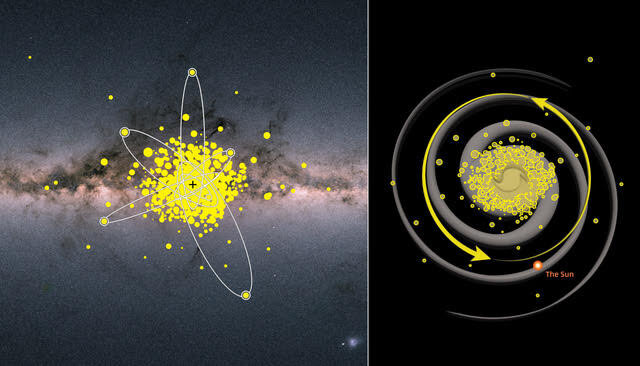PIGS Uncover Ancient Stars at the Core of the Milky Way
The oldest stars in the center of our Galaxy, the Milky Way, have been extensively observed by an international team of researchers. The Pristine Inner Galaxy Survey (PIGS) team has obtained the largest and most detailed set of observations to date. Surprisingly, these stars, which were previously believed to have formed in a chaotic manner, are found to be slowly rotating around the center of the Milky Way. Furthermore, it appears that they spend the majority of their exceptionally long lifespans near the Galactic center. Dr. Anke Arentsen, a member of the PIGS team from the University of Cambridge, will be presenting this groundbreaking research at the National Astronomy Meeting 2023, held at the University of Cardiff.
Several stars that originated within the initial billion years following the Big Bang have endured till present times. These stars serve as valuable resources for investigating the characteristics of galaxies during their nascent stages. Their distinct chemical composition, primarily consisting of hydrogen and helium, sets them apart from younger stars such as the Sun, as they possess a significantly lower proportion of heavier elements. Astronomers usually explore regions beyond the Milky Way’s disk plane, specifically the low-density halo encircling our Galaxy, to locate these ancient stars more conveniently.

According to models of galaxy formation, it is predicted that the oldest stars would be located in the densely packed inner regions of the Milky Way. However, locating these stars in this particular area is quite difficult due to the obstruction caused by a significant amount of interstellar dust along our line of sight towards the center of the Galaxy. Additionally, ancient stars are exceptionally scarce when compared to the vast majority of their younger counterparts.
A special imaging filter was utilized by Arentsen and her team in the PIGS project on the Canada-France-Hawaii Telescope (CFHT) to effectively select potential stars. These stars were then confirmed through spectroscopic observations on the Anglo-Australian Telescope (AAT), resulting in the largest collection of detailed observations for pristine inner Galaxy stars to date. To further investigate the movement of these ancient stars within the Milky Way, the PIGS observations were combined with data from the Gaia space mission. The findings revealed that as the stars age, their motions become more chaotic. However, even the oldest stars still exhibit some average rotation around the center of the Galaxy. Additionally, it was discovered that a significant number of these stars spend the majority of their lifespan in the inner Galaxy, within a sphere that extends halfway between the galactic center and the Sun.
Arentsen expresses enthusiasm about the possibility of observing stars that originated during the initial stages of the Milky Way, which were previously difficult to study. These stars are believed to have formed shortly after the Big Bang, making them valuable remnants from the early Universe. The information available on these ancient celestial bodies is expanding at a fast pace. Arentsen eagerly anticipates the discoveries that will be made about the first stars that inhabited our Galaxy in the coming years.
This article is republished from PhysORG under a Creative Commons license. Read the original article.*
Do not forget to share your opinion with us to provide you with the best posts !



0 Comments